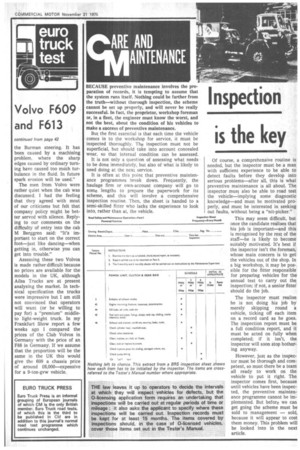nspection is the key
Page 51

If you've noticed an error in this article please click here to report it so we can fix it.
Of course, a comprehensive routine is needed, but the inspector must be a man with sufficient experience to be able to detect faults before they develop into serious problems—after all, this is what preventive maintenance is all about. The inspector must also be able to road test the vehicle—implying some diagnostic knowledge—and must be motivated properly, and must be interested in seeking out faults, without being a "nit-picker."
This may seem difficult, but once the candidate realises that his job is important—and this is recognised by the rest of the staff—he is likely to become suitably motivated. It's best if the inspector isn't the foreman, whose main concern is to get the vehicles out of the shop. In a big workshop, it may be possible for the fitter responsible for preparing vehicles for the annual test to carry out the inspection; if not, a senior fitter should do the job.
The inspector must realise he is not doing his job by merely skipping round a vehicle, ticking off each item on a record card as he goes. The inspection report must be a full condition report, and it must be acted on fully when completed; if it isn't, the inspector will soon Stop bothering anyway.
However, just as the inspector must be thorough and competent, so must there be a team all ready to work on the vehicle to put it right. The inspector comes first, because until vehicles have been inspected, the preventive maintenance programme cannot be implemented. But before we can get going the scheme must be sold to management — sold, because it will appear to cost them money. This problem will be looked into in the next article.








































































































